A leisurely journey on local trains while gazing at the vast blue sea. Throughout Japan, there are numerous scenic local train lines that run along the coast. Among these, the "Enoden" which offers views of Kamakura's townscape and seascapes, the "Gono Line" running along the Sea of Japan, and the "Kyoto Tango Railway" that seems to glide over the sea, are popular routes where you can enjoy not only breathtaking views from the train windows but also experience the charm of local regions.
In this article, we have carefully selected 8 scenic train routes with ocean views, introducing their highlights and recommended spots to visit when you disembark. Please use this as a reference for planning your next trip.
*Information is current as of June 2025.
1. Enoshima Electric Railway Line ― Enoden (Kanagawa)
Where does Enoden run?
The Enoshima Electric Railway (abbreviated as Enoden) is a local line about 10 km long, connecting Fujisawa Station in Fujisawa City to Kamakura Station in Kamakura City, both in Kanagawa Prefecture. This line, connecting 15 stations in total, is popular among tourists not just as a means of transportation but as a railway experience to be enjoyed in itself.
Why is Enoden so popular? Where is the location featured in "SLAM DUNK"?
What makes Enoden so popular is its nostalgic atmosphere and the unique charm of being able to enjoy both the sea and the townscape from the train. Passengers are treated to ocean views from the train windows, rides that pass through narrow streets in residential areas, and convenient access to historic shrines, temples, and gourmet spots. The pace is relaxed, offering an escape from the hustle and bustle of the city.
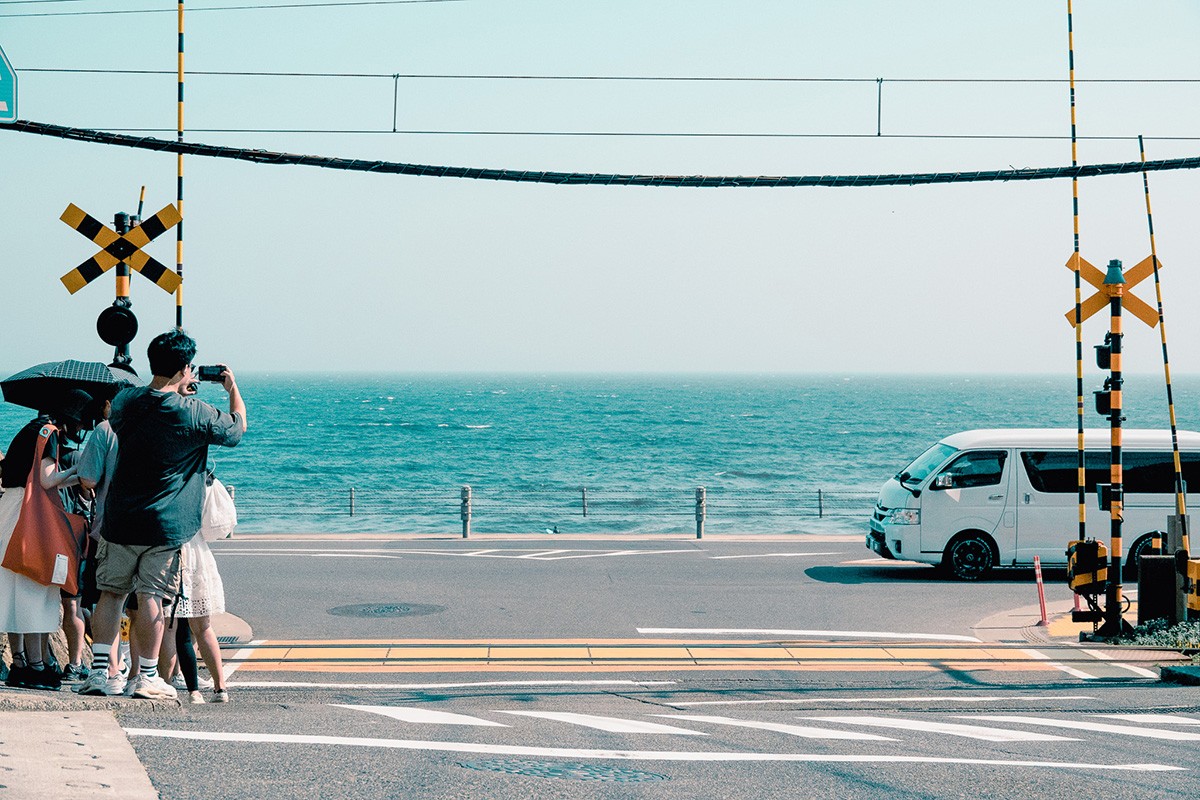
For anime fans, Enoden is also one of the "sacred sites." Particularly famous is the railroad crossing that appears in the opening of "SLAM DUNK." Located just near "Kamakura Kokomae Station"(鎌倉高校前駅), many fans enjoy taking commemorative photos while experiencing the world of the series.
Where can you see the best ocean views? Recommended stops and photo spots
One of the most popular trains in Enoden is between Kamakura High School Station and Shichirigahama Station. In this section that runs along the coast, you can see the sparkling Sagami Bay and Enoshima Island on a clear day, and even Mt. Fuji in the distance.
Recommended stations and photo spots
- Enoshima Station(江ノ島駅):Base for exploring Enoshima. Access to Sea Candle, Iwaya Caves, and plenty of gourmet options.
- Hase Station(長谷駅): Access to Kotoku-in (Great Buddha of Kamakura) and Hasedera (Hase Temple)
- Gokurakuji Station(極楽寺駅): Charming wooden station building. Also famous as a filming location for the movie "Our Little Sister" (Umimachi Diary)
Where can you buy the convenient Enoden day pass ticket “Noriorikun”?
For those who want to fully enjoy Enoden for a day, the Enoden one-day pass "Noriorikun" is recommended. Priced at 800 yen for adults and 400 yen for children, it can be purchased at ticket machines at Enoden stations, tourist information centers, and some hotels. A digital ticket version (compatible with the EMot ticket app) is also available for smartphone purchase, allowing you to start your sightseeing smoothly on the day if prepared in advance.
2. Gono Line (Aomori ~ Akita)
Where does the Gono Line run?
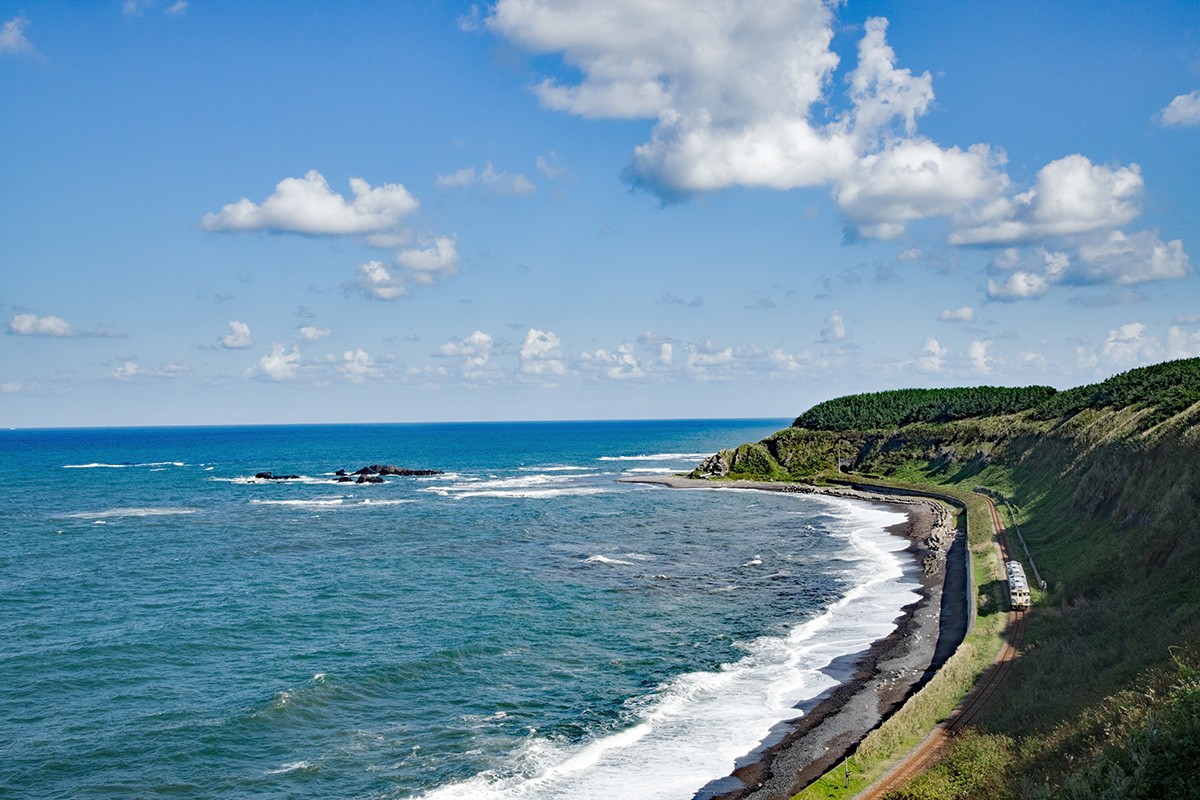
The Gono Line is a local railway operated by JR East, connecting Higashi-Noshiro Station in Akita Prefecture to Kawabe Station in Aomori Prefecture. The total length is 147.2 km, with 43 stations along the line. It offers a leisurely train journey with views of the Sea of Japan coastline.
Where can you see the best ocean views? Which stations offer stunning scenery?

The highlight of the Gono Line is the coastal section between Fukaura Station and Iwadate Station. The panoramic view of the Sea of Japan from the train window is breathtaking. Especially at dusk, the setting sun over the sea paints the train windows red, creating a scene reminiscent of a movie.
Recommended Stops and Photo Spots
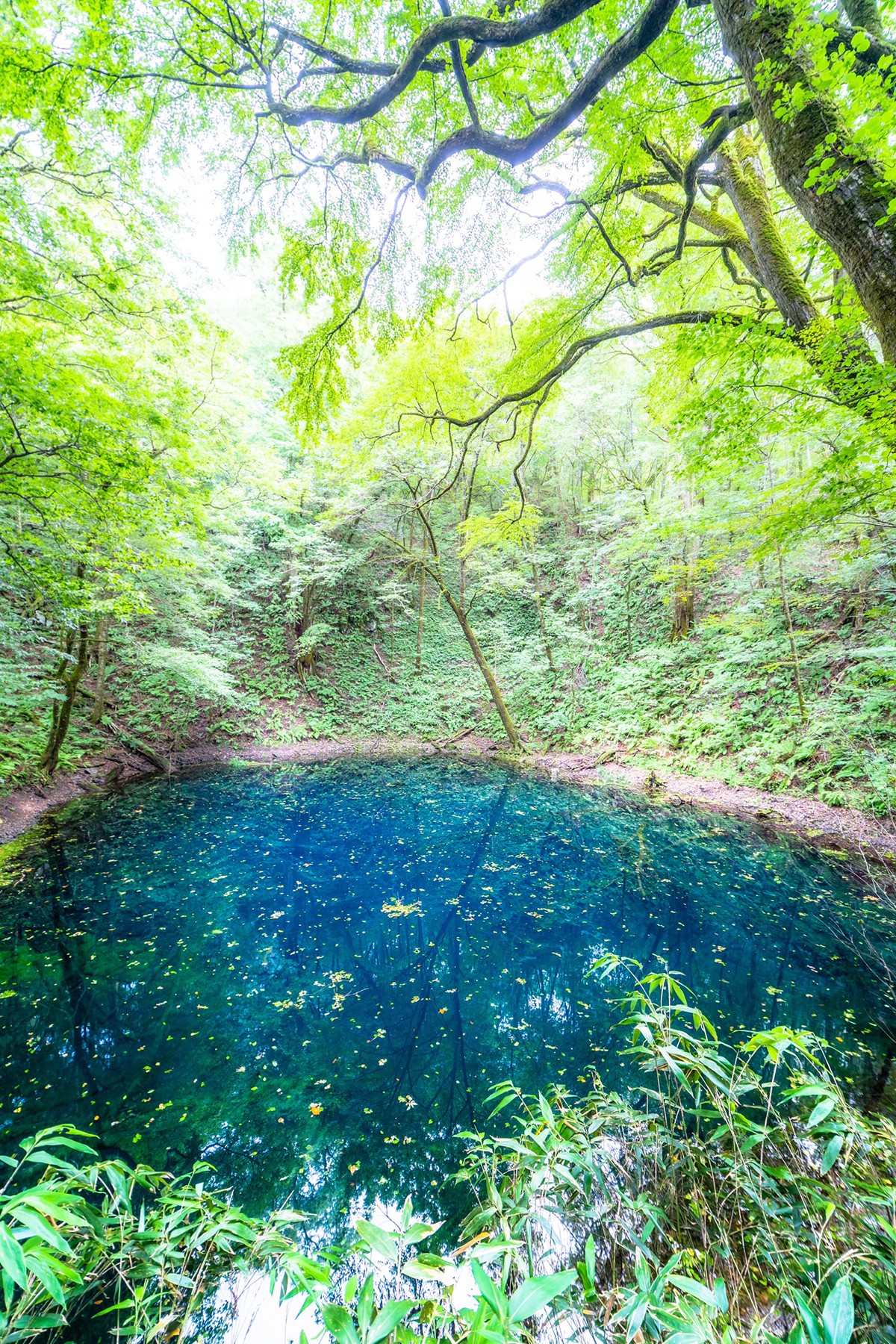
- Senjojiki Station(千畳敷駅): Just steps from the station is a rocky coastal terrace. It's a popular spot for photography.
- Todoroki Station(驫木駅): You can see the ocean right in front of you. This small wooden station building has a nostalgic charm and is beloved by fans of remote, scenic stations.
- Juniko Station(十二湖駅): The gateway to the Shirakami Mountains and a convenient base for sightseeing.
What is "Resort Shirakami"? How is it different from regular trains?
"Resort Shirakami" is a sightseeing train operated by JR East, running between Akita Station and Hirosaki or Aomori Station. While the regular trains on the Gono Line serve as a local means of transportation, "Resort Shirakami" is a special train designed for tourists, with several key differences.
Large panoramic windows
- Unique interior designs using wood and dedicated viewing spaces, varying by train
- On-board events such as live Tsugaru shamisen performances (depending on the season)
All seats on "Resort Shirakami" are reserved, so you'll need to book in advance via a JR ticket office (Midori no Madoguchi), ticket machines, or online.
Where can you buy the Gono Line Free Pass?
The "Gono Line Free Pass" is a 2-day unlimited ride ticket valid for the entire Gono Line and part of the Ou Main Line. It allows unlimited rides on local and rapid trains in non-reserved seats. The price is 3,880 yen for adults and 1,940 yen for children. It can be purchased at ticket offices and reserved seat ticket machines within the free area and the Akita area.
3. Kyoto Tango Railway (Kyoto)
Where does the Kyoto Tango Railway run?
The Kyoto Tango Railway (abbreviated as Tantetsu) is a local line operated by WILLER TRAINS, primarily running in northern Kyoto Prefecture. It consists of the "Miyamai Line" connecting Maizuru City and Miyazu City, the "Miyatoyo Line" from Miyazu City through Yosano Town to Toyooka City, and the "Miyafuku Line" linking Miyazu City and Fukuchiyama City.
Which section runs over the sea? Where are the scenic spots in Kyotango?

The section that "runs over the sea" on the Kyoto Tango Railway is the Yura River Bridge. Located between Tango-Yura Station and Tango-Kanzaki Station, this railway bridge crosses the Yura River. This section runs particularly close to the water surface, giving passengers the sensation of traveling over the sea.
Additionally, the section between Kurita Station and Tango-Yura Station on the Miyamai Line offers beautiful sea views. From the seats, passengers can enjoy panoramic ocean views and an open window landscape.
Recommended Stops and Photo Spots
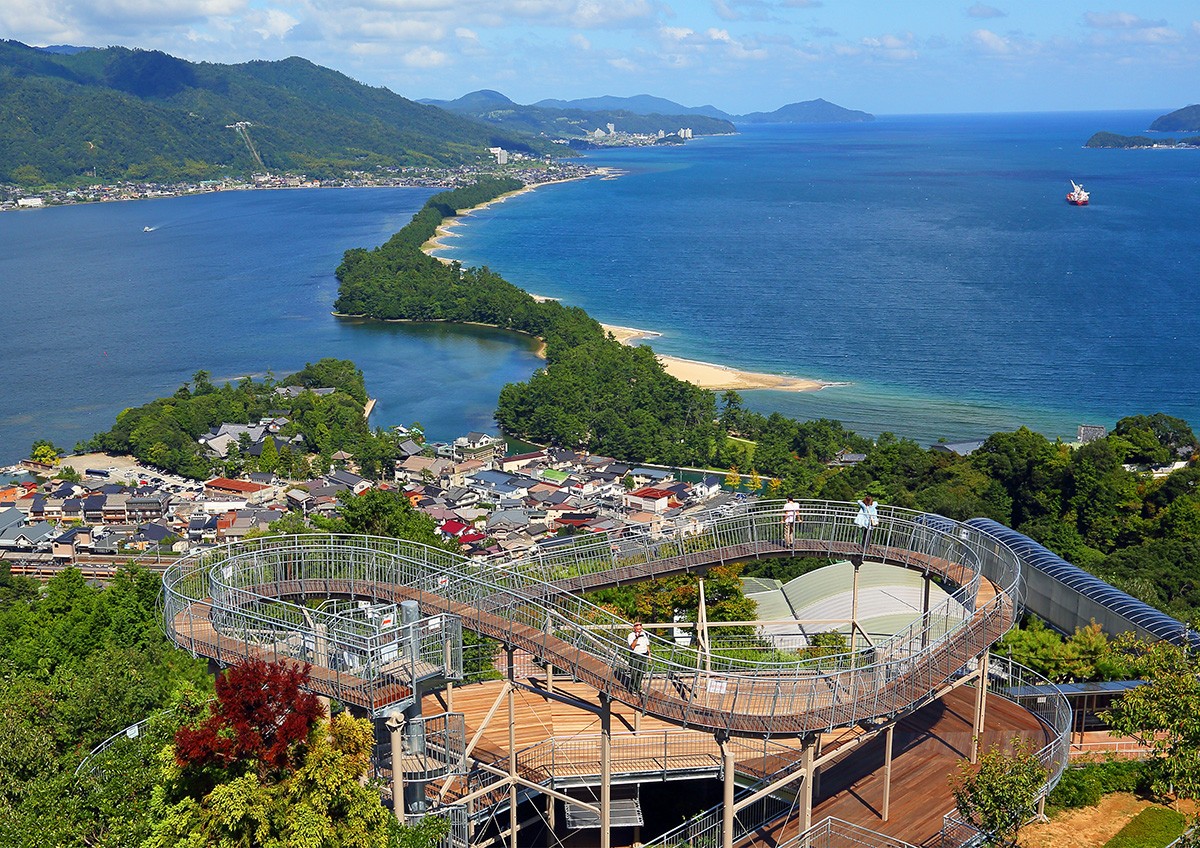
Amanohashidate Station(天橋立駅): The base for visiting Amanohashidate, one of Japan's three scenic views. Within walking distance from the station are scenic spots like Kasamatsu Park, which offers a panoramic view of Amanohashidate. It's also possible to access the "Ine no Funaya" (boat houses of Ine) by bus in about an hour.
- Yuhigaura Kitsu Onsen Station(夕日ヶ浦木津温泉駅): Access point for Yuhigaura Beach, famous for its sunsets. The seaside hot spring town is also nearby, perfect for a relaxing trip.
- Amino Station(網野駅): From here, you can take a bus for about 13 minutes to reach "Kotohikihama Beach". This unique beach makes a "squeaking" sound when you walk on the sand, and offers beautiful views of clear waters and white sand.
What is the Tango Kuromatsu train? Which trains can be boarded without reservations?
The “Tango Kuromatsu train” is a sightseeing train operated by Kyoto Tango Railway. It offers a luxurious experience, combining gourmet cuisine made from local ingredients with beautiful views of northern Kyoto. Reservations are required in advance, and services vary depending on the season and plan.
Additionally, the “Tango Akamatsu train” also requires a reservation and a paid boarding ticket in addition to the regular fare.
On the other hand, the “Tango Aomatsu train” is a train you can ride without a reservation, making it easy to hop on casually.
4. Nemuro Main Line (Hokkaido)
Where does the Nemuro Main Line run?

The Nemuro Main Line starts from Takikawa Station in Takikawa City, Hokkaido, and runs through Furano, Shintoku, Obihiro, and Kushiro, ending at Nemuro Station in Nemuro City. It's operated by JR Hokkaido, and the section from Kushiro Station to Nemuro Station is also known as the "Hanasaki Line". Passengers can enjoy views of Hokkaido's great nature and the beauty of the Pacific Ocean from the train windows.
Where are the scenic seaside sections? Recommended stops and photo spots
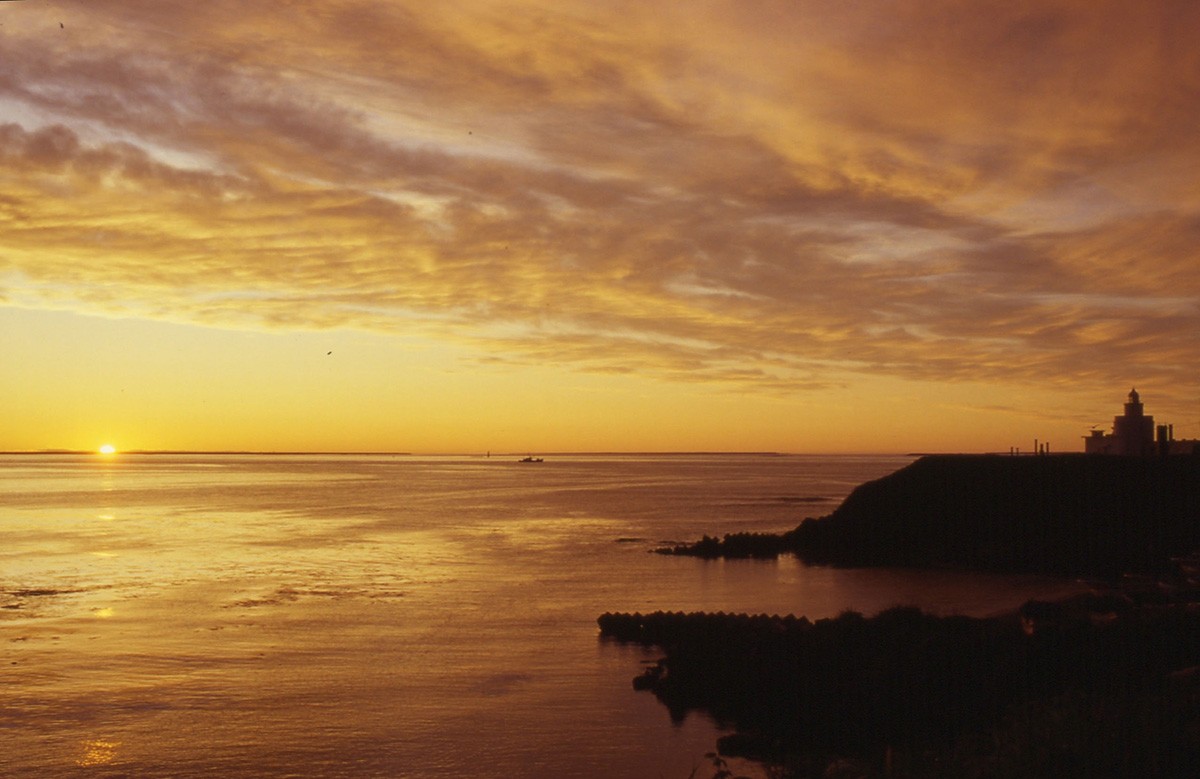
Cape Nosappu © Hokkaido Tourism Organization
Among many highlights along the Nemuro Main Line, the section between Bettouga Station and Ochiishi Station is particularly recommended. This scenic route offers magnificent views of the Ochiishi Coast from the train windows.
Recommended Stops and Photo Spots
- Hamanaka Station(浜中駅): Hamanaka Town is close to the Kiritappu Wetland, offering views of rich natural scenery.
- Nemuro Station(根室駅): Around the terminal Nemuro Station, there are tourist spots like Cape Nosappu and Lake Furen. Cape Nosappu is the place where you can see the earliest sunrise in Japan.
Points to note when using the Nemuro Main Line and local transportation. Why was part of it discontinued?
Due to declining passenger numbers, high maintenance costs, and long-term suspension caused by landslides, it became difficult to continue operating the section between Furano and Shintoku. This section was officially discontinued in March 2024, and bus services now serve this route.
Train services on this line are limited, so it's best to check the timetable in advance. For remote spots like national parks or capes, traveling by car is more convenient.
5. Yosan Line (Kagawa ~ Ehime)
Where does the Yosan Line run?
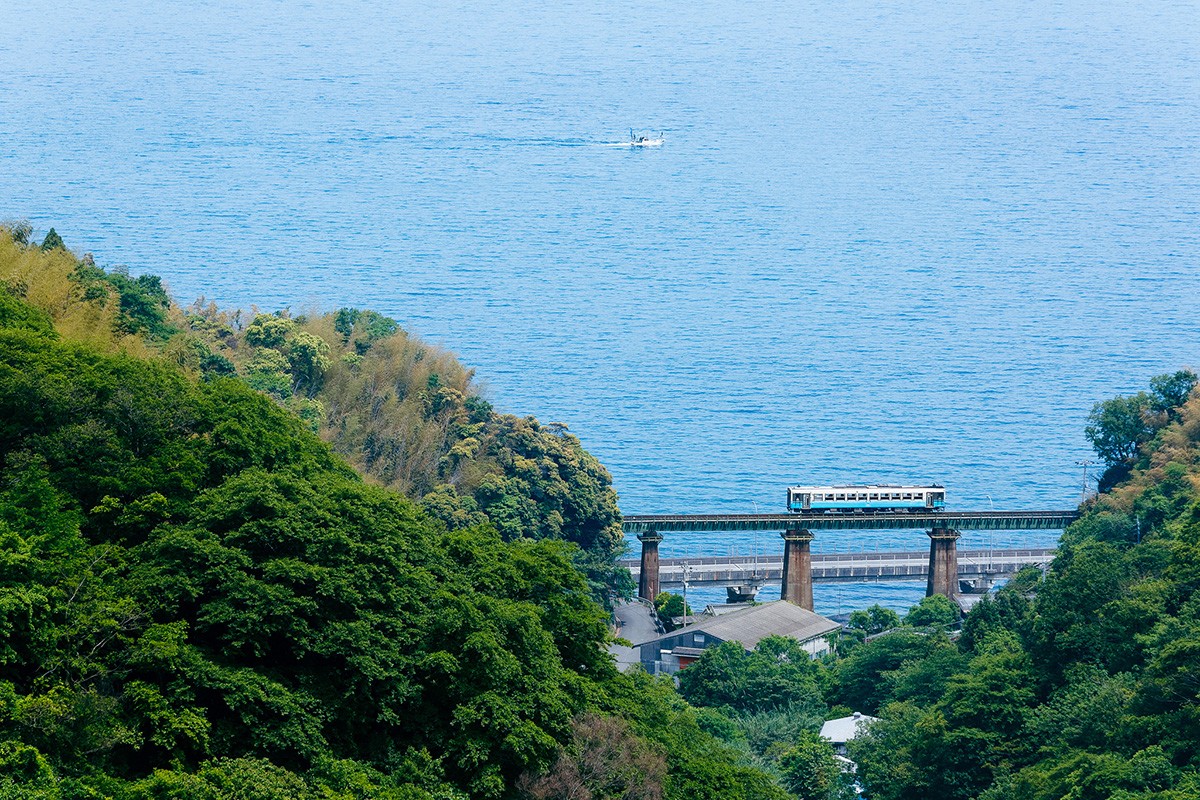
The Yosan Line is a railway route operated by JR Shikoku, connecting Takamatsu Station in Kagawa Prefecture to Uwajima Station in Ehime Prefecture. With a total length of 327 km (including branch lines), its charm lies in the spectacular views of the Seto Inland Sea that can be enjoyed from the train windows.
Which sections are close to the sea? Where are the scenic spots on the Yosan Line?

The highlights of the Yosan Line include the section from Kaigandji Station to Takuma Station in Kagawa Prefecture. The thrilling landscape of the train running right next to the sea is a major attraction. Also, between Takanokawa Station and Iyo-Nagahama Station in Ehime Prefecture, beautiful sea views can be enjoyed from the train windows.
Recommended Stops and Photo Spots

- Shimonada Station(下灘駅): Known as "the station closest to the sea in Japan," it offers a panoramic view of the sea and sky from the platform. It's especially beautiful at sunset and is a popular spot for many travelers and photographers.
- Kitanada Station and Kushi Station(喜多灘駅や串駅): These stations offer a strong local feel, are close to the sea, and are recommended for railway photography and atmospheric travel snapshots.
Free Pass Information for the Yosan Line
Shikoku Free Pass(四国フリーきっぷ): Allows unlimited rides in non-reserved seats on all JR Shikoku lines (including limited express trains) for three consecutive days. Ideal for sightseeing. In addition to paper tickets sold at ticket windows, there are digital versions "Sumaeki Shikoku Free Pass" and "Shikokururi Shikoku Free Pass" that can be easily purchased on smartphones. The price is 18,000 yen for adults and 9,000 yen for children.
- Shikoku Rediscovery Early Bargain Ticket(四国再発見早トクきっぷ): A one-day unlimited ride ticket for rapid and local trains on Saturdays and holidays. Can be purchased at major JR Shikoku stations, Midori ticket vending machines plus, and JR Shikoku Tour branches. The price is 2,400 yen for adults and 1,200 yen for children.
6. Himi Line (Toyama)
Where does the Himi Line run?
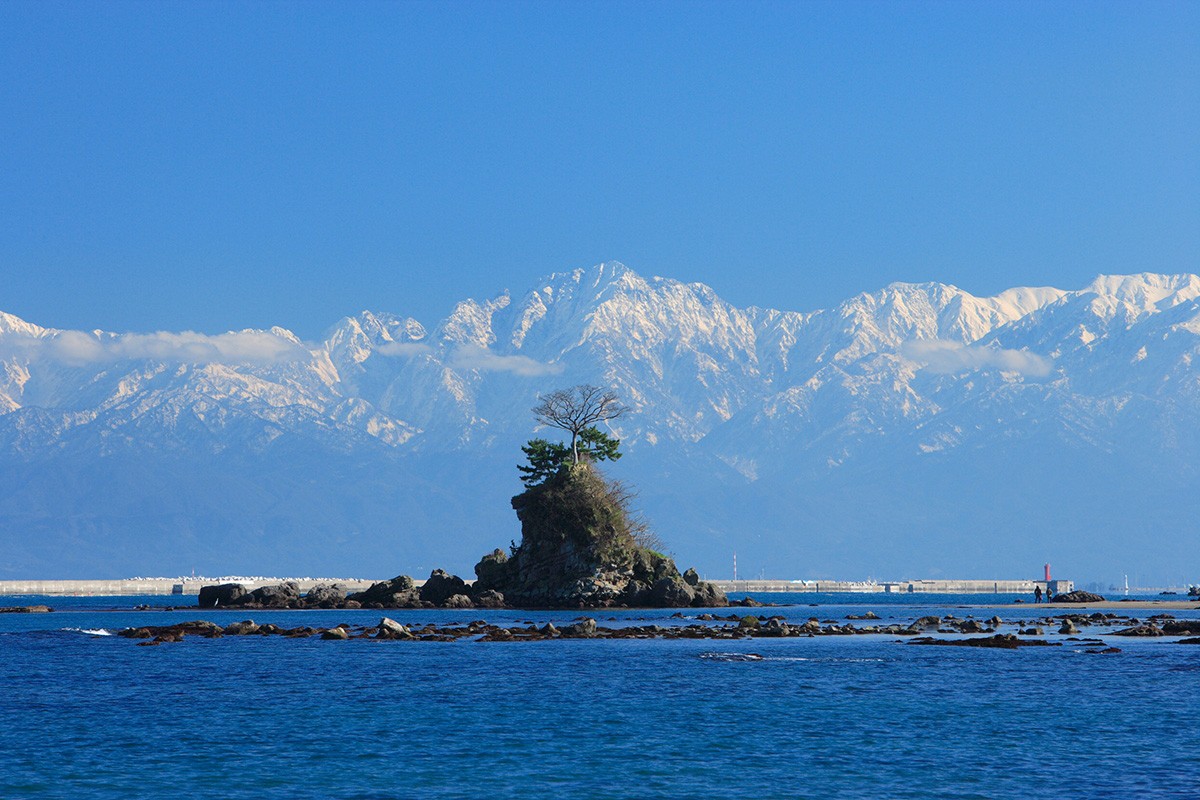
The Himi Line is a local railway connecting Takaoka Station to Himi Station in Toyama Prefecture. Along the line, passengers can enjoy peaceful rural landscapes and views of the Sea of Japan from the train windows, offering a leisurely journey.
Where is the scenic Amaharashi Coast section? Recommended stops and photo spots
The highlight of the Himi Line is the section running along Amaharashi Coast between Etchu-Kokubu Station and Amaharashi Station. This section offers beautiful views of Toyama Bay and the Tateyama Mountain Range.
Recommended Stops and Photo Spots
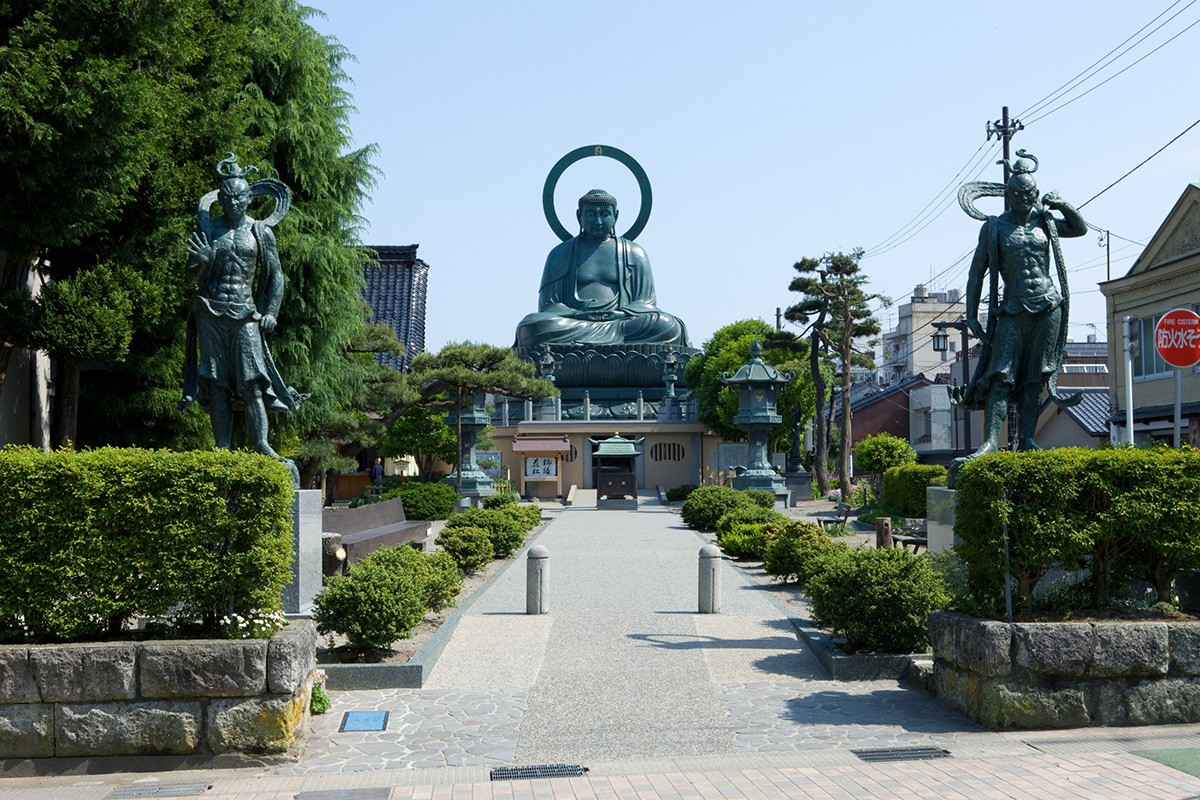
- Takaoka Station(高岡駅): The area around the station has historical spots like "Takaoka Daibutsu" and "Zuiryuji Temple", making it perfect as a base for sightseeing.
- Amaharashi Station(雨晴駅): Located right next to Amaharashi Coast, it's ideal for photographing the coastal scenery with the Tateyama Mountain Range in the background.
7. Nagasaki Main Line (Saga ~ Nagasaki)
Where does the Nagasaki Main Line run?
The Nagasaki Main Line is a JR Kyushu route connecting Tosu Station in Saga Prefecture to Nagasaki Station in Nagasaki Prefecture. With a total length of about 125.3 km, it connects urban and rural areas and is used for commuting, school trips, and tourism.
Which section offers scenic views along the Ariake Sea? Recommended stops and photo spots
The section between Tara Station and Hizen Oura Station in Saga Prefecture runs along the Ariake Sea, offering scenic views. Passengers can enjoy calm sea views from the train windows.
Recommended Stops and Photo Spots
Tara Station(多良駅): The "Sea Torii of Oouo Shrine" within walking distance from the station is a popular photo spot, with a torii gate that appears to float in the Ariake Sea.
- Konagai Station(小長井駅): A scenic station with the Ariake Sea right in front of the platform. The surrounding area features "Fruit Bus Stops" shaped like melons and watermelons, which have become popular photogenic spots.
8. Nichinan Line (Miyazaki ~ Kagoshima)
Where does the Nichinan Line run?
The Nichinan Line connects Miyazaki Station in Miyazaki Prefecture to Shibushi Station in Kagoshima Prefecture, covering a total length of about 88.9 km. It runs through the coastal area of southern Miyazaki Prefecture, partially extending into Kagoshima Prefecture. The line is known for its peaceful seaside scenery and tropical plants visible from the train windows.
Which section offers scenic views of the Hyuganada Sea? Recommended stops and photo spots
The highlight of the Nichinan Line is the section between Aburatsu Station and Nango Station, offering beautiful views of the sea up close.
Recommended Stops and Photo Spots

Aoshima Station(青島駅): Close to Aoshima Shrine and Aoshima Beach, it's popular as a tourist destination.
- Obi Station(飫肥駅): Home to the Obi Castle Town, it's a historical spot where you can feel the atmosphere of the Edo period.
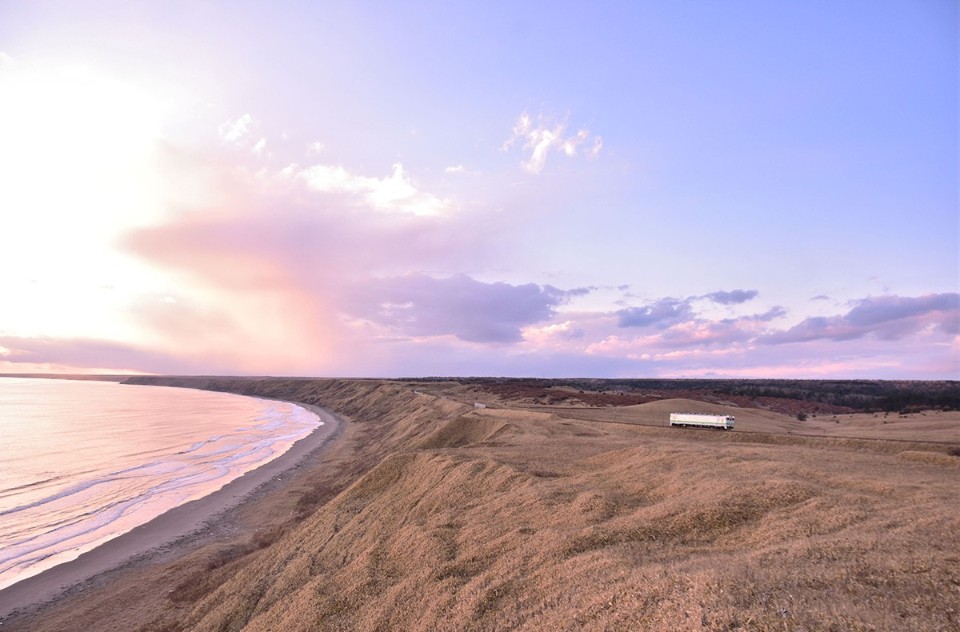
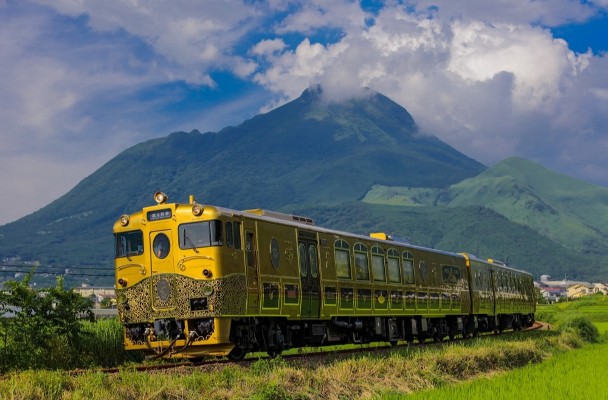
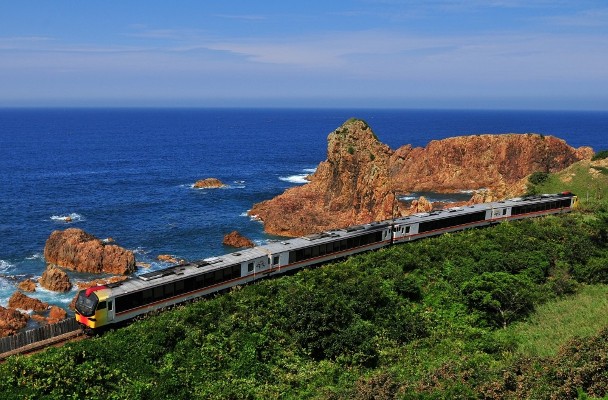
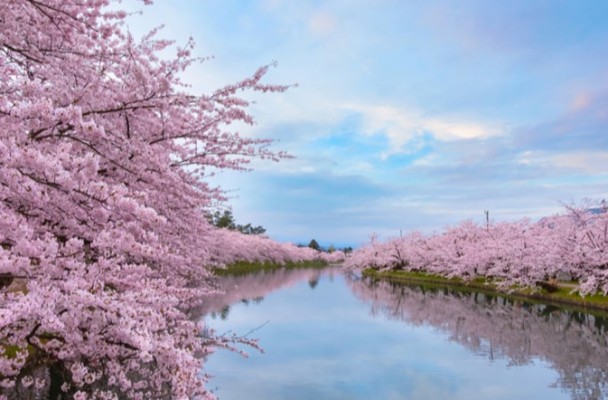
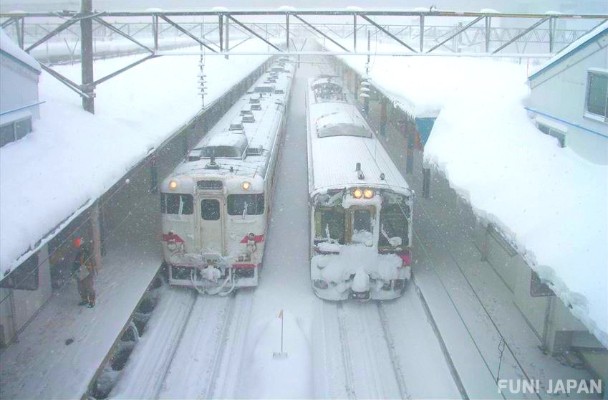
Comments